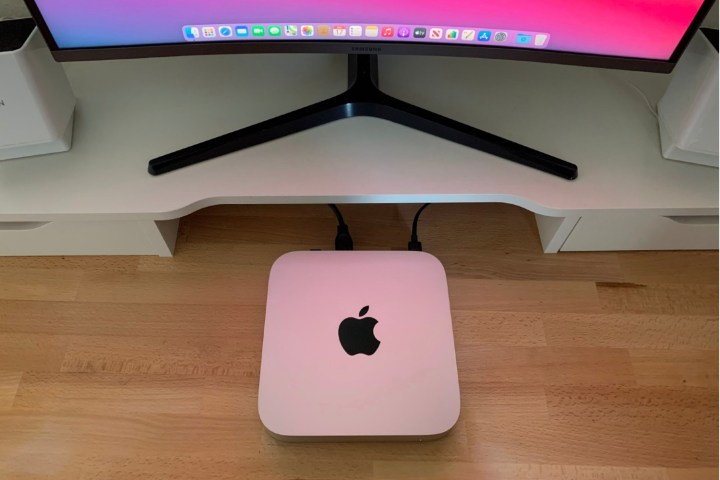An upgraded Mac Mini is currently rumored to launch in just a couple of weeks at Apple’s upcoming spring event.
If the reports turn out to be true, this more powerful Mac Mini could be a more revolutionary little PC than you might first expect. Can something this small ever really be considered “Pro?” Maybe — if Apple plays its cards right.
A GPU-sized hole

Since its initial launch more than 15 years ago, the Mac Mini has been a popular choice as an entry-level Mac. It’s cheap and small, making for a great little work-from-home workstation.
More than that, the addition of the M1 has made it surprisingly powerful. The highly efficient processor was a perfect match for the compact form factor of the Mac Mini, delivering great performance without requiring much extra thermal headroom.
The problem, though, was always in the graphics department. There’s no room in the chassis for a discrete graphics card, especially considering the airflow and fans required to cool a traditional GPU. Just think about how hot and loud
And that limited the type of work that was possible with just the Mac Mini. As good as the M1 is, it won’t speed up your Premiere exports or play games any faster.
That’s where the M1 Pro comes in.
The M1 Pro to save the day

The chip was first announced last year for the MacBook Pro, and provides a serious bump in graphics performance compared to the M1. This is exactly what is rumored to appear in the next Mac Mini. It might be enough for Apple to brand it the “Mac Mini Pro.”
The M1 Pro would add twice the graphics cores as the standard M1, bringing the overall count up to 16. While double the graphics cores didn’t always mean double the performance, the M1 Pro MacBook Pro was a major step up from the M1, averaging around the same performance as a mobile RTX 3050 Ti. And despite the improved graphics, the MacBook Pro never got hot or loud. I see no reason the Mac Mini couldn’t receive that same bump.
The M1 Max would be even better, of course, but Apple may want to keep the device small and save that kind of performance for its upcoming iMac Pro. But who knows? I also expected the M1 Max to be reserved exclusively for the 16-inch MacBook Pro, but that didn’t end up being true.
This upgraded Mac Mini was actually rumored to launch alongside the MacBook Pro last year. Reports from Jon Prosser said it would include four Thunderbolt ports, a magnetic power connector, and even a new “plexiglass”-like top. Remarkably, this new design was rumored to be even thinner than the standard Mac Mini.

Whether or not any of that remains true is up in the air. After all, even the MacBook Pro grew in thickness when the M1 Pro and M1 Max came around.
Even without the redesigned look, the M1 Pro is enough on its own to get excited about. Discrete-level graphics in a form factor this small has never been done before. That’s even more significant with how expensive GPUs are right now. Apple could easily charge too high a premium for that innovation, but the $699 starting price for the M1 Mac Mini is promising. Apple charges $350 more for a similarly configured MacBook Air than it does for the M1 Mac Mini. How that price scaling will apply to a Mac Mini Pro is yet to be seen.
If Apple can pull it off, especially without charging too much, it may have used the extreme efficiency of the M1 to reinvent yet another category in computing.
Editors' Recommendations
- The Vision Pro is already in trouble. Here’s how Apple can turn the tide
- These 6 tweaks take MacBooks from great to nearly perfect
- This new VR headset beats the Vision Pro in one key way and is half the price
- A new wave of powerful laptops rises to challenge the MacBook Pro
- The biggest threat to the MacBook this year might come from Apple itself


